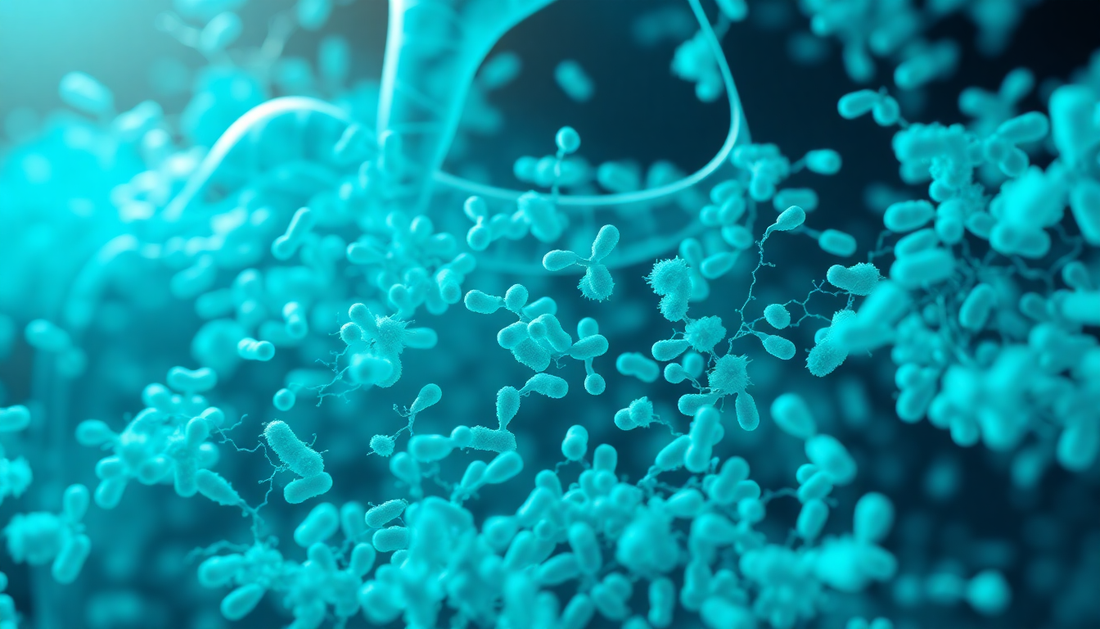
The Gut Microbiome After Bariatric Surgery: Scientific Insights and Patient Implications
Share
The human gut is home to a diverse ecosystem of trillions of microorganisms—collectively known as the gut microbiome—that influence nearly every aspect of human health. This complex network of bacteria, viruses, fungi, and other microbes is central to processes such as digestion, immunity, and even neurological function. With the rise of bariatric surgery as a treatment for severe obesity, a growing body of research is exploring how surgical intervention reshapes the gut microbiome and how those changes affect long-term outcomes.
What Is the Gut Microbiome?
The gut microbiome consists of the microbial populations residing in the gastrointestinal tract. These microbes play a role in digesting food, synthesizing vitamins, regulating immune responses, and modulating inflammation (NIH, 2023). An imbalance in this community—often termed dysbiosis—has been associated with obesity, insulin resistance, type 2 diabetes, and cardiovascular disease (Turnbaugh et al., Nature, 2009).
Microbial Profiles Before Bariatric Surgery
Studies show that individuals with obesity often exhibit reduced microbial diversity and a higher prevalence of pro-inflammatory bacterial species (Ridaura et al., Science, 2013). This altered microbial environment may contribute to metabolic dysregulation and heightened inflammation, further complicating weight management and health outcomes.
Immediate Postoperative Microbiome Changes
Following bariatric procedures like Roux-en-Y gastric bypass (RYGB) or sleeve gastrectomy, the gut microbiome undergoes rapid and significant changes. Research has found increased microbial diversity within weeks post-surgery, along with an enrichment of beneficial species such as Akkermansia muciniphila and Faecalibacterium prausnitzii, which are associated with anti-inflammatory effects and improved metabolic health (Ilhan et al., mSphere, 2017).
These shifts are influenced by anatomical alterations, changes in bile acid metabolism, and decreased caloric intake. For example, the anatomical bypass of the proximal small intestine in RYGB alters nutrient availability and pH levels, creating new niches for different microbial species (Furet et al., Gut, 2010).
Long-Term Microbial Remodeling
The microbiome continues to evolve over the first 6 to 12 months post-surgery. Longitudinal studies show a sustained increase in microbial diversity and a persistent presence of species associated with metabolic improvements, such as enhanced insulin sensitivity and reduced low-grade inflammation (Tremaroli et al., Cell Metabolism, 2015). However, some patients may also experience gastrointestinal issues linked to microbial imbalances, such as small intestinal bacterial overgrowth (SIBO) or diarrhea.
Mechanisms Behind Microbiome Shifts
Several mechanisms contribute to post-surgical microbiome remodeling:
- Anatomical changes affect transit time, pH, and oxygen levels in the gut.
- Altered dietary patterns, especially higher protein and lower fat intake, shift microbial nutrient availability.
- Hormonal changes, including reductions in ghrelin and increases in GLP-1, indirectly modulate microbial populations (Holst et al., Nature Reviews Endocrinology, 2013).
These mechanisms collectively foster an environment where microbial species promoting weight loss and improved glucose metabolism can thrive.
Health Implications of Microbiome Alterations
Metabolic Benefits
Microbial changes post-surgery have been linked to improved glucose control, enhanced satiety, and reductions in markers of systemic inflammation (Palleja et al., Nature, 2016). These changes may contribute significantly to the remission of type 2 diabetes in many patients after surgery.
Immune and Inflammatory Responses
The gut microbiome plays a central role in immune regulation. Post-surgical shifts may lower inflammatory cytokines and increase regulatory immune cells, supporting better systemic immune function (Thaiss et al., Science, 2016).
Risks and Challenges
While most changes are beneficial, potential risks include nutrient malabsorption and microbiome instability, especially if dietary diversity is not maintained. Some individuals may also be at higher risk for gastrointestinal infections or overgrowth of opportunistic bacteria (Schwiertz et al., Obesity Reviews, 2010).
Microbiome Monitoring and Support Strategies
Microbiome Testing
Postoperative microbiome testing can offer insights into gut health and help guide targeted dietary and supplement interventions. Stool analysis may reveal bacterial diversity, abundance, and potential imbalances.
Probiotics and Prebiotics
Although more research is needed, preliminary studies suggest that targeted probiotic supplementation may support microbial diversity and digestive health after bariatric surgery (Aron-Wisnewsky et al., Gastroenterology, 2019). Prebiotic fibers, such as inulin and fructooligosaccharides (FOS), can promote the growth of beneficial bacteria.
Dietary Recommendations
A varied, nutrient-dense diet rich in fiber, fermented foods, and lean protein supports microbial balance. Regular intake of polyphenol-rich foods (e.g., berries, green tea) may also enhance microbiome diversity (Cardona et al., Journal of Nutritional Biochemistry, 2013).
Future Directions in Research and Care
Ongoing research is exploring microbiome-based therapies as adjuncts or alternatives to surgery. These include:
- Fecal microbiota transplantation (FMT) to mimic post-surgical microbial profiles
- Personalized probiotics tailored to individual microbiome composition
- Microbiome biomarkers to predict surgery outcomes and complications
Conclusion
Bariatric surgery does far more than reshape the stomach—it reshapes the gut microbiome in ways that profoundly impact health. While microbial diversity and composition improve after surgery, long-term success relies on sustained dietary habits, routine monitoring, and, in some cases, microbial support strategies. As science continues to uncover the intricate relationships between the microbiome and metabolic health, a more personalized and holistic approach to bariatric aftercare will become increasingly essential.
Medical Disclaimer
This article is for informational purposes only and is not intended as a substitute for professional medical advice, diagnosis, or treatment. Always seek the advice of your physician or another qualified healthcare provider with any questions you may have regarding a medical condition. Never disregard professional medical advice or delay seeking it because of something you have read in this article.
